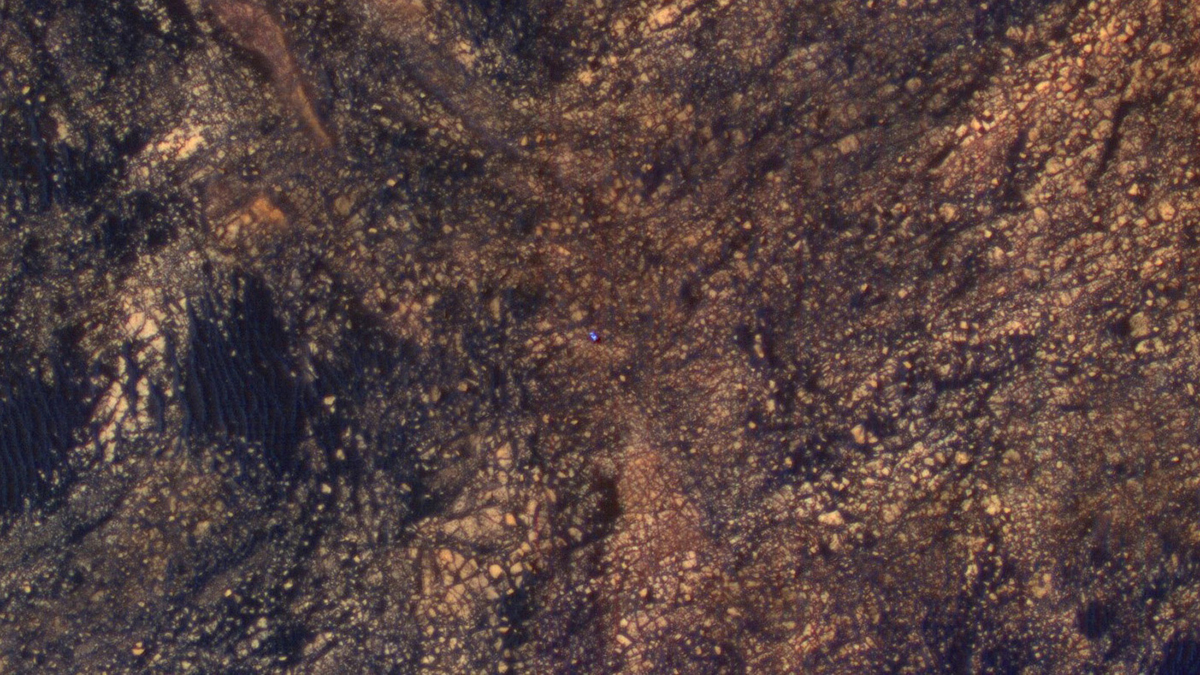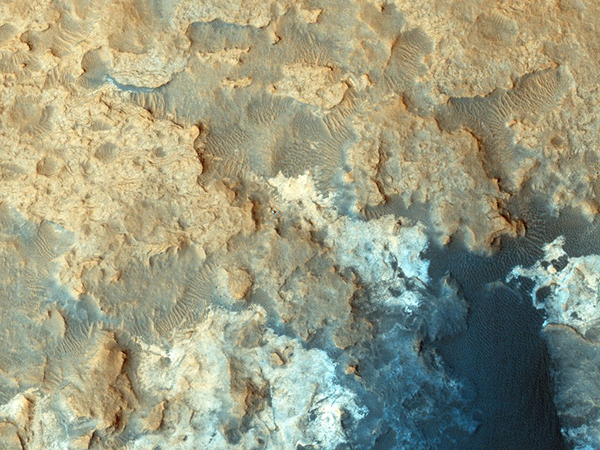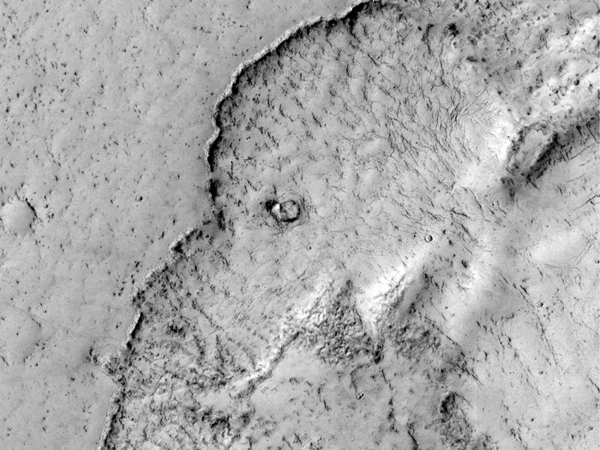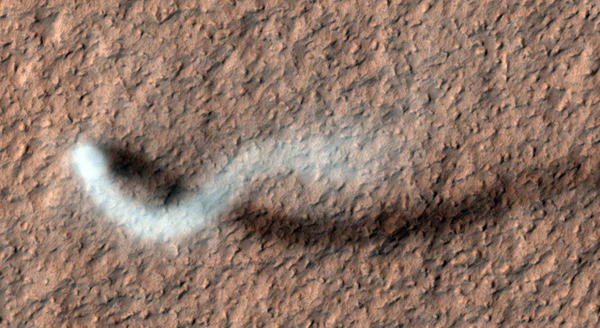Il cratere Aram Chaos su Marte
L'Aram Chaos è uno dei numerosi crateri presenti sulla superficie di Marte, ma ciò che lo rende particolarmente affascinante è la sua topografia unica e la storia geologica che cela.
Le immagini, riprese dalla telecamera HiRISE a bordo del Mars Reconnaissance Orbiter ed elaborate attraverso bande cromatiche per evidenziare meglio la struttura e la geologia rispetto ai colori naturali, ci mostrano un paesaggio accidentato, segnato da creste e depressioni profonde, che testimoniano l'antico impatto che ha dato origine a questo cratere.
Attraverso questi filtro di colore, possiamo percepire i differenti tipi di rocce presenti nell'area circostante. Il blu intenso, che spesso compare nel video, indica la presenza di basalto, una roccia vulcanica ricca di minerali come il ferro e il magnesio. Questo suggerisce che la zona circostante ad Aram Chaos potrebbe essere stata influenzata da attività vulcanica passata.
Strumenti di questo tipo offrono l'opportunità ai ricercatori di esplorare la superficie di Marte in modo più dettagliato per comprendere la storia geologica del pianeta rosso e per cercare eventuali tracce di vita passata.







